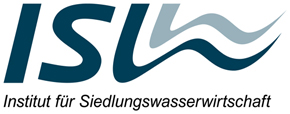
Minimization of Eutrophication at Lake Chao
Project Funding
http://www.bmbf.de/ (02WT0895)
Project Duration
01/2005 - 03/2010
Project Partner
LWI, Abteilung Hydrologie, Wasserwirtschaft und Gewässerschutz; TU Braunschweig
IGB, Leibnitz-Institut für Gewässerökologie und Binnenfischerei, Berlin
AEPB, Anhui Environmental Protection Bureau
Contact Person
Dipl.-Ing. Xin Wu
PD Dr.-Ing. T. Dockhorn
Objectives of the Research Project
Lake Chao is located in the Chinese province Anhui. It is the fifth largest freshwater lake in China with 760 km2 of surface water. Lake Chao is not only an important economic factor, but also a major drinking water supply for its catchment area of 14.000 km2. Lake Chao has been heavily eutrophicated as a result of wastewater discharges and the release of diffuse pollutants from agriculture. This causes massive blooming of blue algae during the summer months and as a consequence the production of highly toxic microcystins which endangers and temporarily interrupts drinking water supply .
The objective of the research project is an interdisciplinary scientific concept which presents possibilities for improving the current status of lake eutrophication in order to be able to use the lake as a drinking water supply without elaborate prior water treatment. To reach this goal, nutrient discharge into the lake must be reduced, wastewater treatment must be improved and the release of diffuse pollutants especially from agriculture must be stopped. Algal bloom in the lake must be minimized in order to prevent microcystin production. The project must be seen in the context of sustainable development of water resources.
The rehabilitation of the Lake Chao catchment area is a long term project and calls for a multitude of mutually dependent technical and non-technical measures. Scientific goal of the project is the development and testing of a Decision Support System (DSS Lake Chao) for the whole region of Lake Chao with special attention to certain lake areas and to the catchment area. The DSS is to be used as a decision support tool for planning, evaluation and realization of rehabilitation measures and for monitoring dynamic processes such as water quality and the operation of water treatment systems.
The development, testing and optimization of a simple and cost-efficient biological treatment step for lake water treatment (biologically activated filtration) is another scientific goal. This treatment step should be suitable for the elimination of microcystins before the actual drinking water treatment takes place.
In cooperation with the Chinese partners all diffuse and single discharge points within the catchment area will be recorded systematically and will be documented in a wastewater register (DSS wastewater). This will be the basis for all decisions and for the realization of a future wastewater rehabilitation concept.